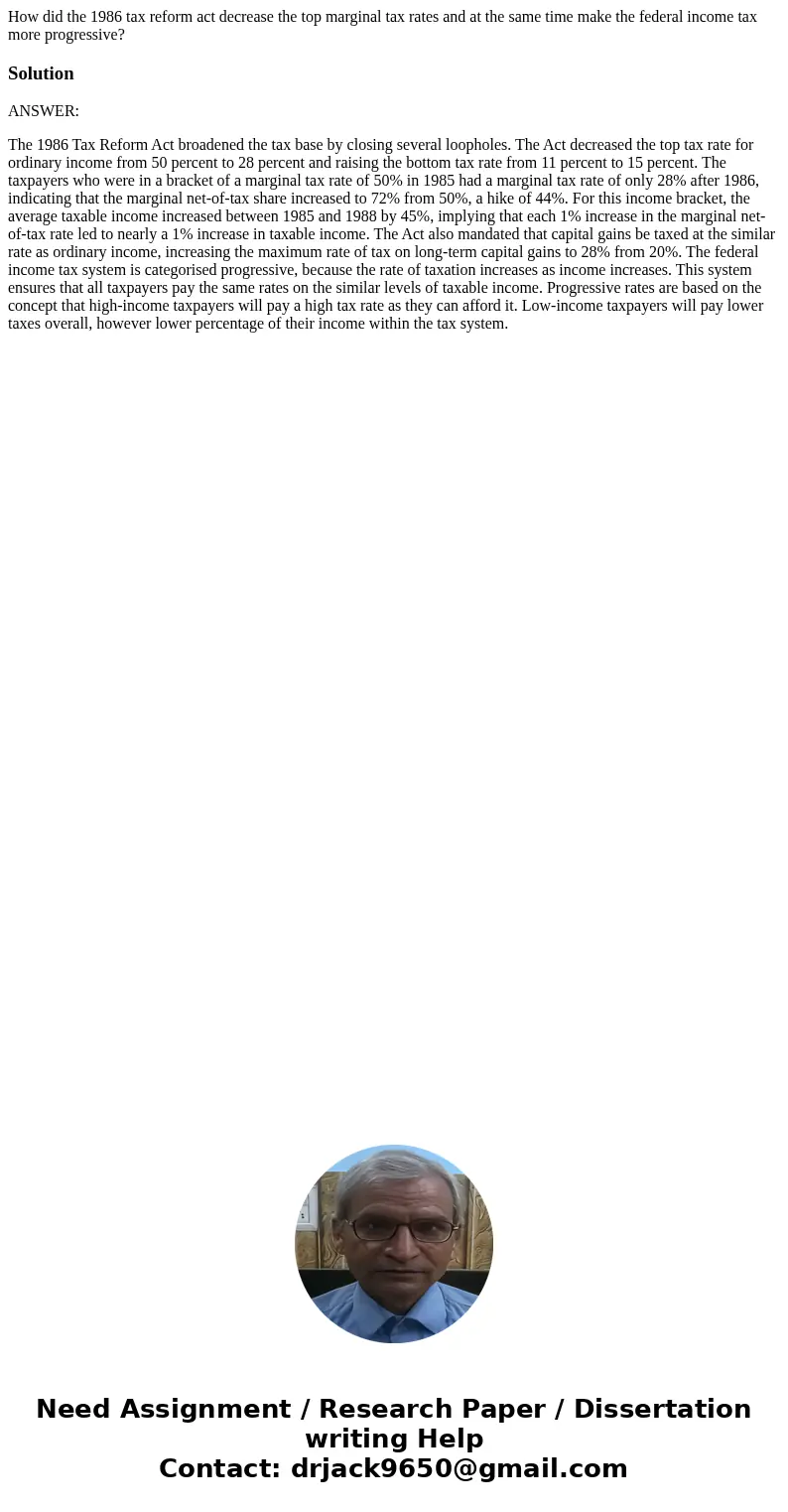How did the 1986 tax reform act decrease the top marginal ta
How did the 1986 tax reform act decrease the top marginal tax rates and at the same time make the federal income tax more progressive?
Solution
ANSWER:
The 1986 Tax Reform Act broadened the tax base by closing several loopholes. The Act decreased the top tax rate for ordinary income from 50 percent to 28 percent and raising the bottom tax rate from 11 percent to 15 percent. The taxpayers who were in a bracket of a marginal tax rate of 50% in 1985 had a marginal tax rate of only 28% after 1986, indicating that the marginal net-of-tax share increased to 72% from 50%, a hike of 44%. For this income bracket, the average taxable income increased between 1985 and 1988 by 45%, implying that each 1% increase in the marginal net-of-tax rate led to nearly a 1% increase in taxable income. The Act also mandated that capital gains be taxed at the similar rate as ordinary income, increasing the maximum rate of tax on long-term capital gains to 28% from 20%. The federal income tax system is categorised progressive, because the rate of taxation increases as income increases. This system ensures that all taxpayers pay the same rates on the similar levels of taxable income. Progressive rates are based on the concept that high-income taxpayers will pay a high tax rate as they can afford it. Low-income taxpayers will pay lower taxes overall, however lower percentage of their income within the tax system.

 Homework Sourse
Homework Sourse